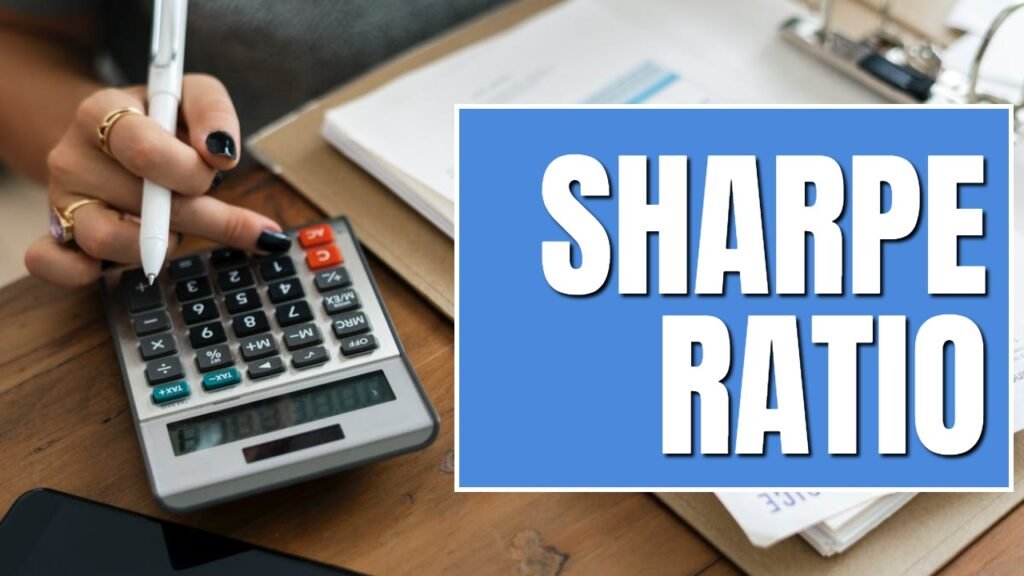Understanding different financial metrics is crucial when it comes to making informed and calculated investment decisions. One such key financial metric that plays a crucial role for investors, portfolio managers, brokers, and analysts is the Sharpe ratio. It is a measure of any given investment’s excess return over the risk-free rate, relative to its standard deviation. It is one way to develop an understanding of how much additional return you can get for taking on the additional risk of an investment.
Sharpe Ratio
The Sharpe ratio, which was developed by the Nobel Laureate William F. Sharpe, measures the efficiency of an investment and helps in analyzing the investment’s return by adjusting for its risk. Simply put, Sharpe ratio helps the investor understand the potential return of an investment compared to its risk. A higher Sharpe ratio indicates better-adjusted performance for the investment, considering its level of risk. This makes Sharpe ratio a comparative measure of risk-adjusted return on investments.
In the complex world of investments, deciding which investments to make can sometimes feel like an overwhelming task. Many investors rely on financial metrics such as Sharpe Ratio or XIRR (Extended Internal Rate of Return) to cut through the noise. So, what is XIRR? It is a function in Excel for calculating the internal rate of return for a series of cash flows or investments, which can occur at irregular intervals. XIRR, like Sharpe Ratio, provides a method of evaluating and comparing different investments and their returns.
Comparing Sharpe ratio and XIRR
Comparing Sharpe ratio and XIRR can furnish insights to the investor about the efficiency and profitability of different investment options. For instance, suppose you are comparing two investment instruments with similar returns, but with different standard deviations (risk). In such a case, the Sharpe ratio can provide significant insights. An instrument with a higher standard deviation may give a higher return, yet it will also carry a higher risk. Conversely, an instrument with a lower Sharpe ratio would indicate a lower risk-adjusted return.
An investor may like to invest in portfolios that have a higher Sharpe ratio, as these are often deemed to offer better return per unit of risk. Hence, many investors use the Sharpe ratio to identify the risk-adjusted performance, as it provides a more comprehensive picture than mere return rates.
Sharpe ratio Calculatoin
Let’s look at an example to further illustrate how the Sharpe ratio can be helpful. Suppose there are two investment portfolios: Portfolio A and Portfolio B. Assuming a risk-free rate of 2%, if Portfolio A has an expected return rate of 8% with a standard deviation of 12%, and Portfolio B has an expected return rate of 12% with a standard deviation of 20%, the Sharpe ratios would be calculated as follows:
Sharpe Ratio for Portfolio A = (8% – 2%) / 12% = 0.5
Sharpe Ratio for Portfolio B = (12% – 2%) / 20% = 0.50
Both portfolios have the same Sharpe ratio, implying they have the same return per unit of risk. However, the investor could consider picking Portfolio B because it offers a higher return, regardless of higher risk.
Calculating the Sharpe ratio is fundamentally easy once you identify three components – the expected portfolio return, the risk-free rate, and the portfolio’s standard deviation or volatility. But, a caution while interpreting a Sharpe ratio – since it uses standard deviation to measure a fund’s risk, it considers the overall risk level and not how the price of the asset has changed. Consequently, investments whose prices have extreme changes up and down could potentially look less volatile than they truly are.
To mitigate these anomalies, investors can use metrics like the Sortino Ratio that include only downside risk, or the Treynor ratio that uses Beta instead of Standard deviation. Further, other measures like the XIRR can provide a more detailed analysis if the cash flows have occurred at irregular intervals.
sum up
To sum up, the Sharpe ratio provides a useful measure for comparing the risk-adjusted performance of different investments, which is essential in creating a well-balanced portfolio to maximize your returns. By leveraging these metrics in conjunction, one can gain a more comprehensive understanding of an investment’s overall financial performance. Taking the time to understand both the rewards and risks of an investment can go a long way in ensuring successful investment outcomes.
Every investor, regardless of his level of risk tolerance, looks for a return on his investment. By measuring the risk-adjusted performance of an investment using the Sharpe ratio, an investor can identify whether the returns he is getting are worth the risk he is taking. Thus, understanding metrics like the Sharpe ratio and XIRR are an essential part of an investor’s toolkit, enabling them to make more informed investment decisions and maximize their potential returns.
Go to Home






Your perspective on this topic is very interesting. Thanks for the detailed explanation.